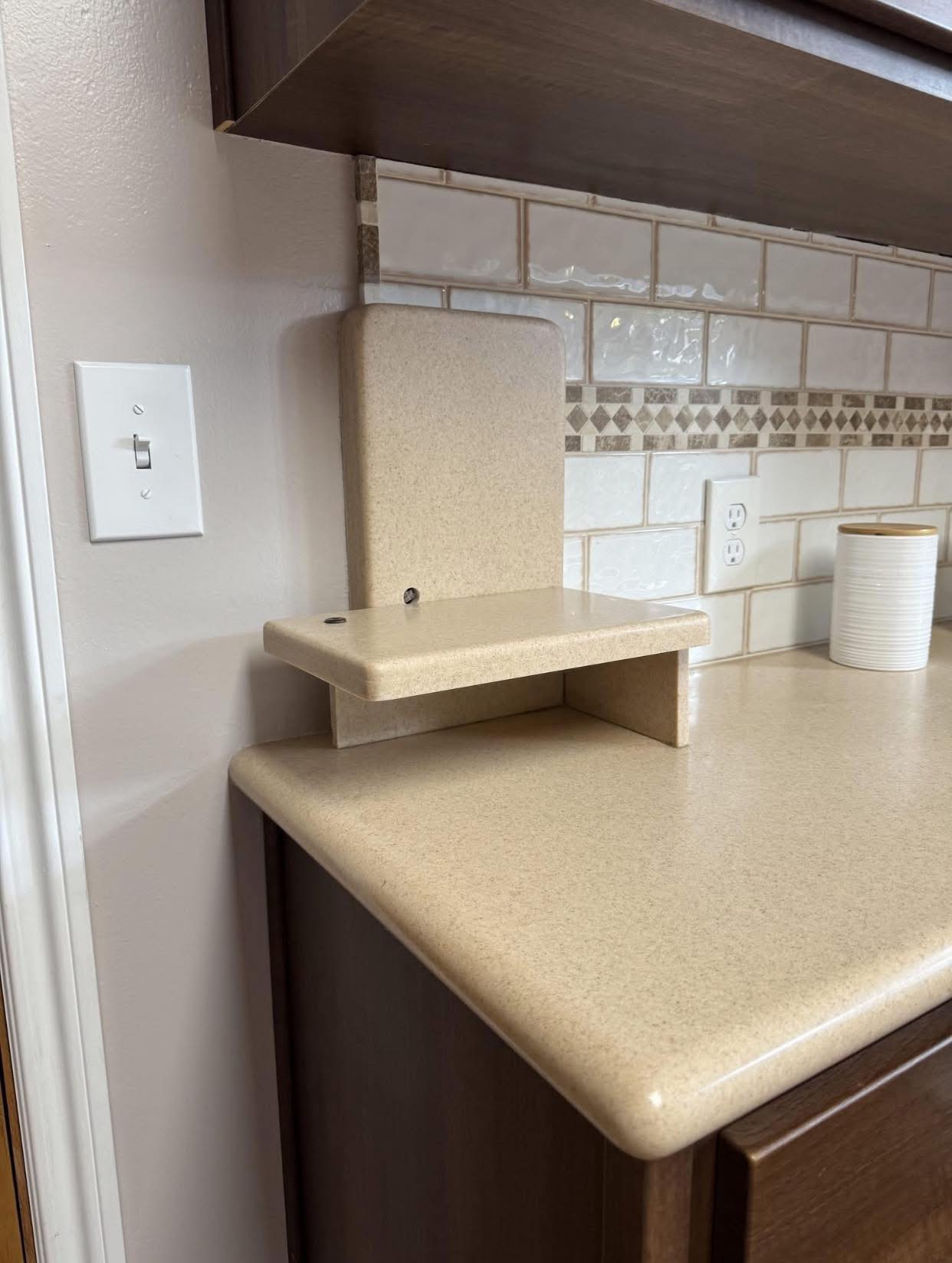The other day, while touring a house, I stumbled upon a small, quirky shelf in the kitchen. It matched the laminate of the countertop perfectly but was oddly placed—too small to be practical, too high to be useful for anything modern. It took me a second, but then I realized exactly what it was: a kitchen phone shelf. That discovery hit me right in the nostalgia. I hadn’t thought about those shelves in years, but the moment I saw it, memories flooded back—my mom yelling, “Don’t tie up the line!” my dad grumbling about the sky-high long-distance bill, and me sprawled out on the floor, tangled in the phone cord, chatting for hours about nothing in particular.

Growing up, we had one of those shelves installed next to the refrigerator. It held a beige, corded phone with chunky buttons and a thick cord that seemed capable of strangling a sibling. Beneath the shelf sat the phone book, yellowed and heavy, filled with strange business names, cryptic notes, and a mishmash of scribbles. That book was a treasure trove for prank calls until caller ID spoiled the fun. Tied to the shelf was always a pen attached to a string and a notepad with scrawled reminders on the first page—“Call dentist,” “Pick up milk,” and other errands. My brother once doodled a ninja turtle in the corner, and that little drawing stuck around for years, a tiny piece of family history.
That kitchen phone shelf was more than just a surface; it was a silent witness to family life. It was the place where all the news, gossip, and secrets passed through. Kneeling next to it with a pencil in hand, you’d jot down notes or shout across the house for someone to pick up the phone. It wasn’t fancy, but it did the job. It gave the phone a permanent home, right in the heart of the kitchen, where everyone could reach it easily. It was the first “home base” for communication in the house, a gathering point where conversations started, messages were left, and plans were made.
Then, suddenly, those shelves lost their purpose. Cordless phones arrived, then flip phones, and finally smartphones. In no time, the kitchen phone shelf was obsolete. Some people ripped them out; others let them collect dust, forgotten relics of a different era. The daily ritual of grabbing the phone off that little shelf vanished, and with it, the shelf itself faded into silence.
@dspacestv The Telephone Chair! #designtok #designhistory #retro #interiordesign #design #greenscreen ♬ original sound – Designing Spaces
I won’t lie—I kind of miss that shelf. I wouldn’t reinstall one in my kitchen now, but when I see one still hanging around, I get a pang of nostalgia. Nowadays, I’d probably use it to hold mail or place a potted plant, but deep down, I know exactly what it was meant for. It was never just a shelf. It was a vital part of daily life, the pulse of the kitchen.
That simple slab of laminate was where life happened: a quick call to check in, a long conversation while waiting for dinner, notes scribbled out between bites of toast. It was a hub of connection and communication, quietly supporting the family’s rhythm and routine. It carried the weight of countless memories and moments, big and small.
In today’s world, where phones live in pockets and conversations happen through texts and apps, the kitchen phone shelf feels like a time capsule. It reminds us of a slower, more tactile era when phones were a shared resource and conversations weren’t interrupted by notifications or buzzing alerts. It was a small but steady fixture in the home, anchoring people to one another, to the moment, and to the simple act of talking.
So, next time you see one of those old kitchen phone shelves, don’t just glance past it. Remember what it stood for: connection, family, and the messy, beautiful chaos of everyday life. That little shelf wasn’t just a spot for a phone—it was the kitchen’s heartbeat, a quiet witness to countless stories, secrets, and shared moments. It’s amazing how something so small can hold such big memories.





